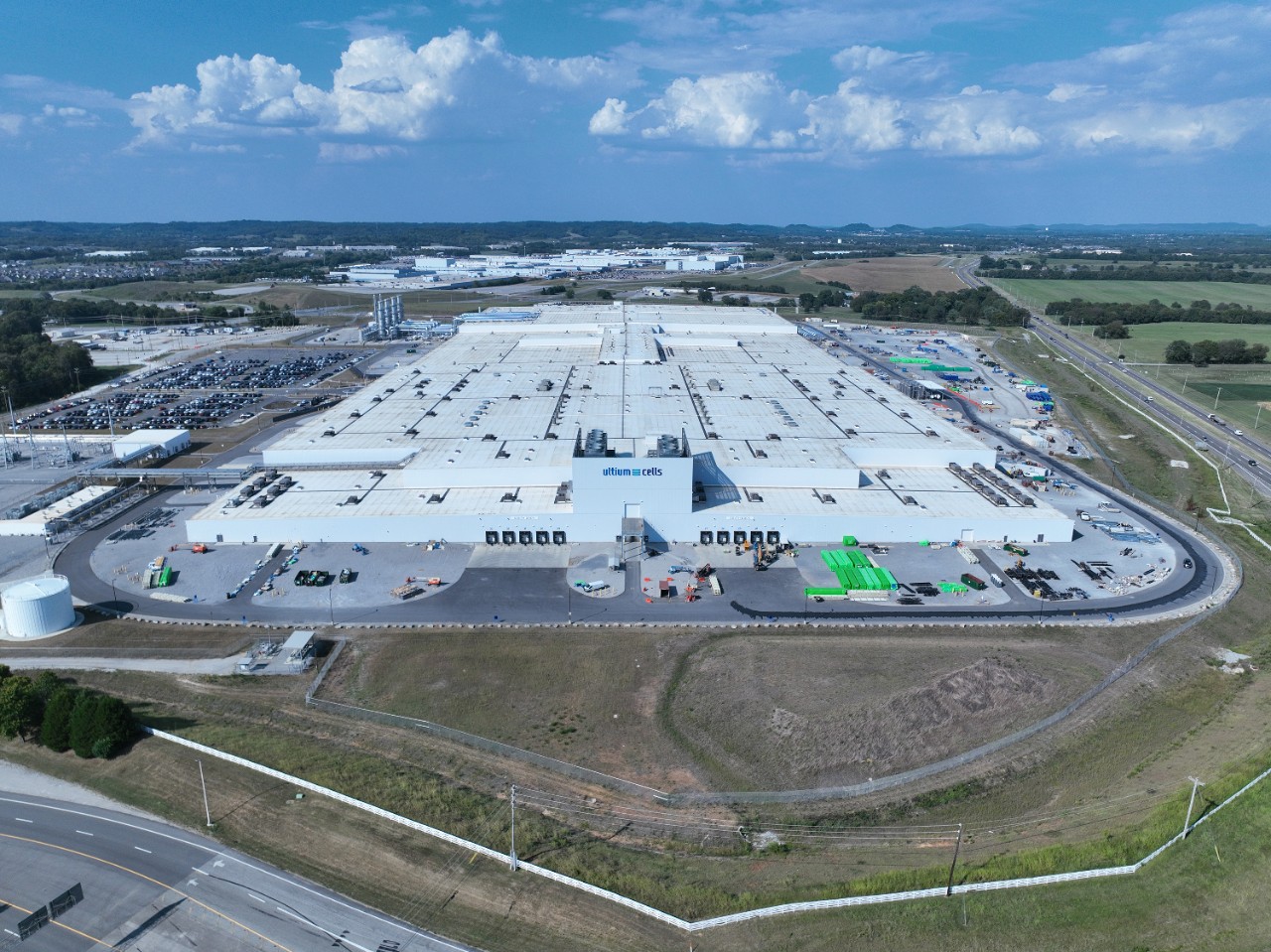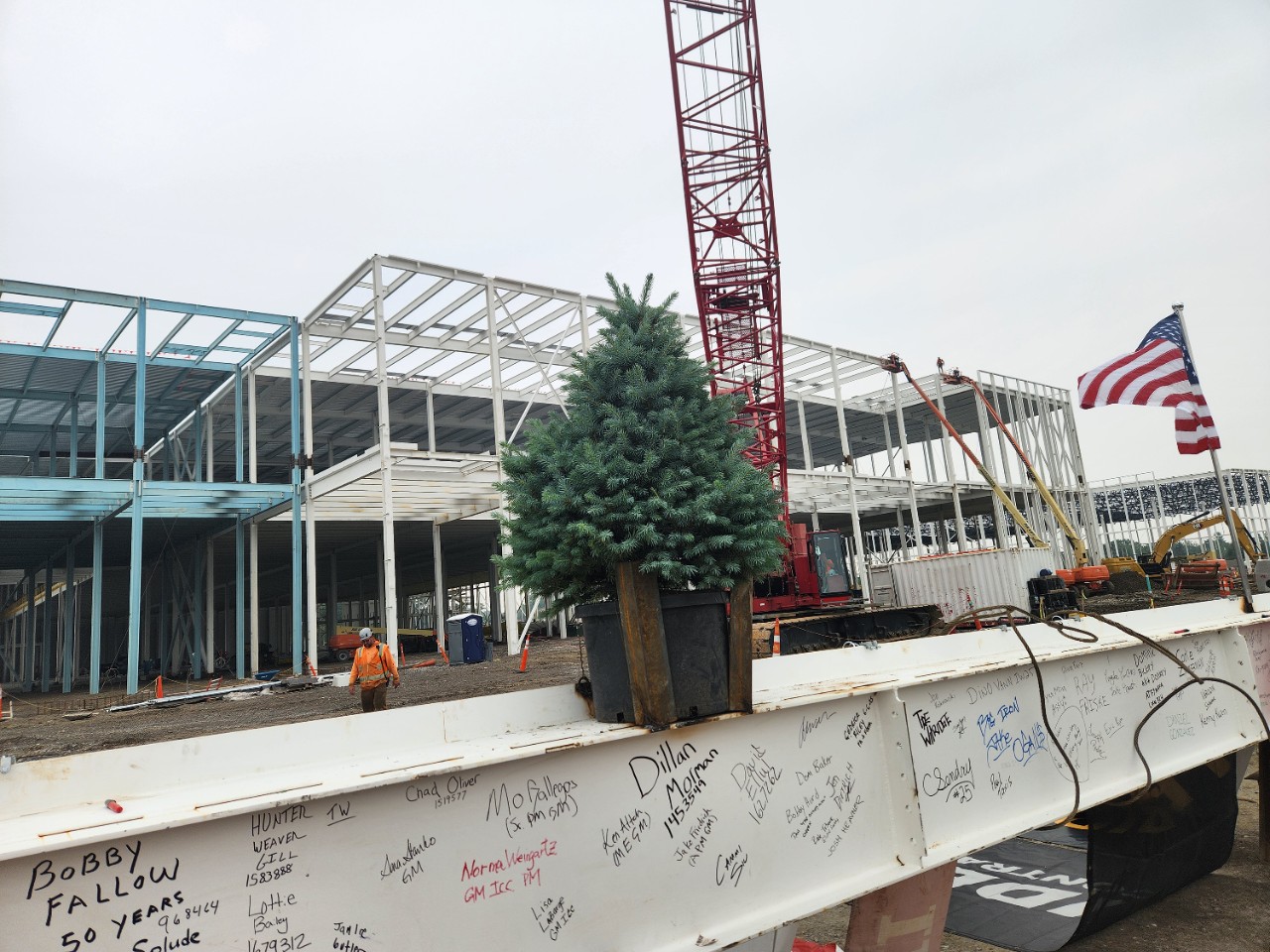By Mark Reuss, president, General Motors
By Mark Reuss, president, General Motors
Just outside Nashville, American ingenuity and innovation are thriving in the rolling hills of Spring Hill, Tennessee. Ultium Cells – General Motors’ joint venture with LG Energy Solution – is demonstrating America’s ability to lead in transformative new battery cell technology. With the Ultium Cells sites in Spring Hill and Warren, Ohio, GM has the largest OEM battery cell manufacturing capacity in this country.
Building on a $2.3 billion commitment announced in 2021, Ultium Cells Spring Hill will guide the next phase of our battery strategy, capable of producing multiple chemistries.
In addition to today’s nickel cobalt manganese aluminum (NCMA) pouch cells, the Ultium Cells plant will produce battery cells using lithium iron phosphate (LFP) chemistry. LFP was an American breakthrough that’s grown in popularity as a low-cost battery solution worldwide. I’m proud that we’re bringing its benefits – and associated jobs – back to America. Work on the LFP battery cell lines at Spring Hill will start soon, with full commercial production targeted for late 2027.
With Spring Hill established as the home for LFP, the next step will be finalizing a home for lithium manganese rich (LMR) chemistry. As we recently announced, GM plans to be the first company to produce LMR prismatic battery cells at commercial scale. This advancement is key to delivering the best mix of range, performance, and affordability for our EV customers.
Our expertise in these three battery chemistries will enable us to scale production of lower-cost LMR and LFP cell technologies so we can produce both full-size electric pickups and affordable EVs like the Chevrolet Bolt. The new battery chemistries will complement our NMCA solutions and expand the range of choices available across our growing EV portfolio.
Meanwhile, in Michigan
On a cool day last month in Warren, Michigan, the final steel beam was placed at the newly named Ancker-Johnson Battery Cell Development Center on our nearly 70-year-old Global Technical Center campus outside Detroit. Between this 500,000-square-foot building complex and the Wallace Battery Cell Innovation Center next door, we’ve invested $900 million to strengthen our U.S. technology base and secure a competitive advantage in the global race for battery leadership. Our commitment to modern facilities and cutting-edge equipment far exceeds the investment of any U.S. automaker.
CAPTION: The final steel beam of the Ancker-Johnson Battery Cell Development Center in GM's campus in Warren, Michigan, was signed by the facility and construction teams before being raised into its home in June.
The Ancker-Johnson Center, named for pioneering physicist and former GM executive Betsey Ancker-Johnson, will help reduce development times for new batteries by as much as a year.
Its first assignment? To advance LMR batteries into production before anyone else.
The new state-of-the-art facility will house development teams focused on validating new cell concepts and accelerating the road to large-scale production. They’ll help us bring production cells to market quickly and cost-effectively, while meeting GM’s high standards for safety, quality, and performance. And they’ll help us innovate faster on the battery cost, range, and charging speed – all critical to our customers and to broader EV adoption.
These investments reinforce our commitment to build a resilient, U.S.-based EV material supply chain. Over the past several years, we’ve announced a series of strategic investments and supply agreements to secure critical resources, such as U.S.-sourced lithium and magnets, to support our long-term growth.
From securing the supply chain to advancing new chemistries and cell form factors to investing in state-of-the-art facilities for development, validation and manufacturing, every step we’ve taken is designed to build a robust, diverse America-driven EV portfolio. And we think we’re in a better position than any other automaker to lead the industry, and the country, on this road to the future.

Just outside Nashville, American ingenuity and innovation are thriving in the rolling hills of Spring Hill, Tennessee. Ultium Cells – General Motors’ joint venture with LG Energy Solution – is demonstrating America’s ability to lead in transformative new battery cell technology. With the Ultium Cells sites in Spring Hill and Warren, Ohio, GM has the largest OEM battery cell manufacturing capacity in this country.
Building on a $2.3 billion commitment announced in 2021, Ultium Cells Spring Hill will guide the next phase of our battery strategy, capable of producing multiple chemistries.
In addition to today’s nickel cobalt manganese aluminum (NCMA) pouch cells, the Ultium Cells plant will produce battery cells using lithium iron phosphate (LFP) chemistry. LFP was an American breakthrough that’s grown in popularity as a low-cost battery solution worldwide. I’m proud that we’re bringing its benefits – and associated jobs – back to America. Work on the LFP battery cell lines at Spring Hill will start soon, with full commercial production targeted for late 2027.
With Spring Hill established as the home for LFP, the next step will be finalizing a home for lithium manganese rich (LMR) chemistry. As we recently announced, GM plans to be the first company to produce LMR prismatic battery cells at commercial scale. This advancement is key to delivering the best mix of range, performance, and affordability for our EV customers.
Our expertise in these three battery chemistries will enable us to scale production of lower-cost LMR and LFP cell technologies so we can produce both full-size electric pickups and affordable EVs like the Chevrolet Bolt. The new battery chemistries will complement our NMCA solutions and expand the range of choices available across our growing EV portfolio.
Meanwhile, in Michigan
On a cool day last month in Warren, Michigan, the final steel beam was placed at the newly named Ancker-Johnson Battery Cell Development Center on our nearly 70-year-old Global Technical Center campus outside Detroit. Between this 500,000-square-foot building complex and the Wallace Battery Cell Innovation Center next door, we’ve invested $900 million to strengthen our U.S. technology base and secure a competitive advantage in the global race for battery leadership. Our commitment to modern facilities and cutting-edge equipment far exceeds the investment of any U.S. automaker.

The Ancker-Johnson Center, named for pioneering physicist and former GM executive Betsey Ancker-Johnson, will help reduce development times for new batteries by as much as a year.
Its first assignment? To advance LMR batteries into production before anyone else.
The new state-of-the-art facility will house development teams focused on validating new cell concepts and accelerating the road to large-scale production. They’ll help us bring production cells to market quickly and cost-effectively, while meeting GM’s high standards for safety, quality, and performance. And they’ll help us innovate faster on the battery cost, range, and charging speed – all critical to our customers and to broader EV adoption.
These investments reinforce our commitment to build a resilient, U.S.-based EV material supply chain. Over the past several years, we’ve announced a series of strategic investments and supply agreements to secure critical resources, such as U.S.-sourced lithium and magnets, to support our long-term growth.
From securing the supply chain to advancing new chemistries and cell form factors to investing in state-of-the-art facilities for development, validation and manufacturing, every step we’ve taken is designed to build a robust, diverse America-driven EV portfolio. And we think we’re in a better position than any other automaker to lead the industry, and the country, on this road to the future.